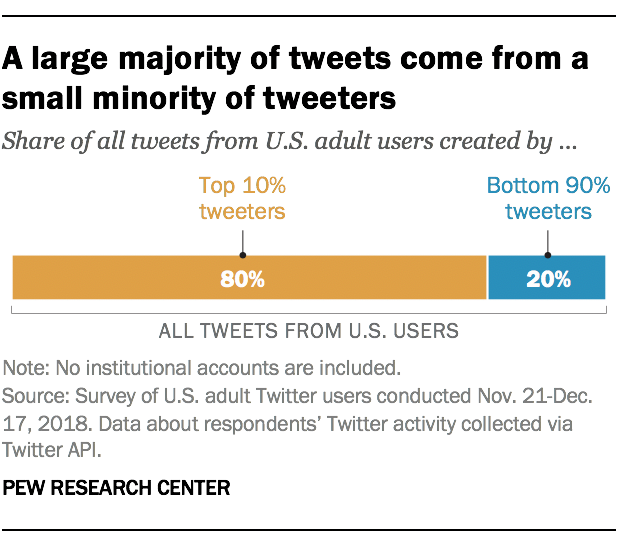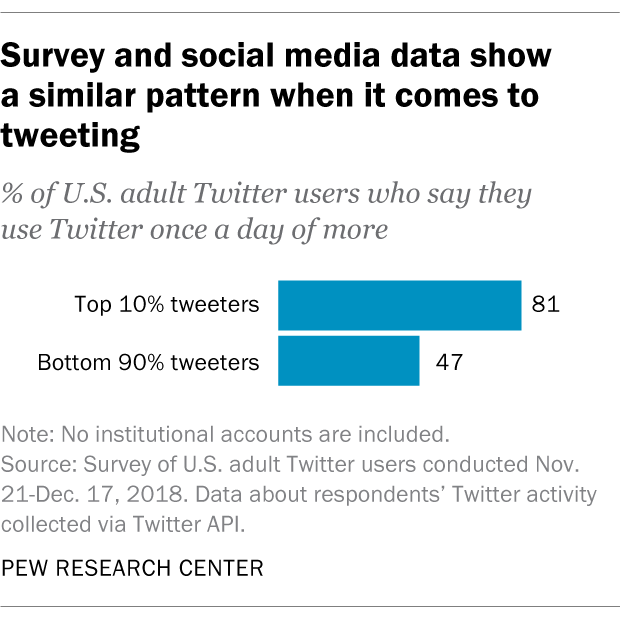We know from Pew Research Center surveys that 22% of U.S. adults use Twitter. But surveys can only tell us so much about how these Americans actually use the platform.
A new Pew Research Center study goes a step further. First, we asked survey respondents whether they use Twitter and, if so, for permission to look at their Twitter accounts. After reviewing each account, we quantified these Americans’ tweets, likes, followers and followings. The result is the Center’s first study of Twitter behavior that’s based on a representative sample of U.S. adults who use the platform.
Here are some highlights from the study:
-

Among U.S. adults, Twitter discourse is dominated by a small share of tweeters.
The most prolific tweeters – those in the top 10% by number of tweets – are responsible for 80% of all tweets created by U.S. adults. That includes all types of tweets: original tweets, retweets and quote tweets. - Most U.S. adult Twitter users don’t engage much. The median Twitter user posts two tweets a month, favorites one tweet a month, follows 89 accounts and has 25 followers.
- The most prolific tweeters among U.S. adults are especially likely to be women. Among the most prolific tweeters – again, those in the top 10% by number of tweets – 65% are women. Women account for 48% of less prolific users.
Beyond its findings, the study also provided us with some new methodological insights into studying Twitter use:
- Combining survey data with social media data gives us a more complete picture. Surveys typically only tell us things like who uses Twitter (older vs. younger people, for example, or college-educated versus those without a college education) or what they use the platform for (reading the news, for instance). Tweet analyses, meanwhile, usually only tell us how the platform is being used (how many tweets are sent each day, for instance). By combining survey data with Twitter account data, we can learn more about how particular groups of people use the platform in a more detailed way than survey data alone allows.
-

Self-reported Twitter use generally matches up with how frequently people actually do tweet.
The most prolific tweeters are much more likely than other users to say in surveys that they use Twitter every day. Accessing these Americans’ actual tweet data lets us quantify how prolific daily users tend to be. - We can begin to study whether the ideas people express on Twitter are associated with their opinions outside of Twitter. The study’s approach allows us to compare attitudinal data collected in surveys with the sentiments those same Americans are expressing on their Twitter feeds.
You can read more about the report’s methodology here.